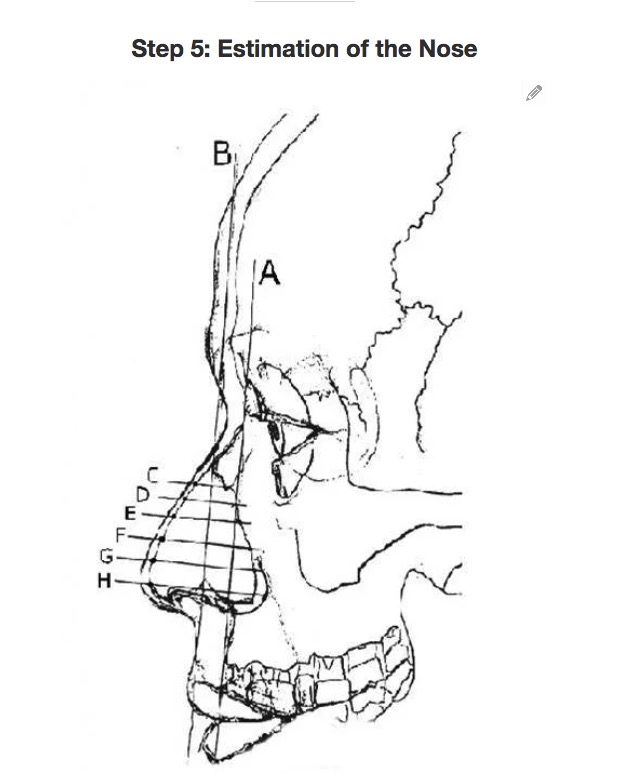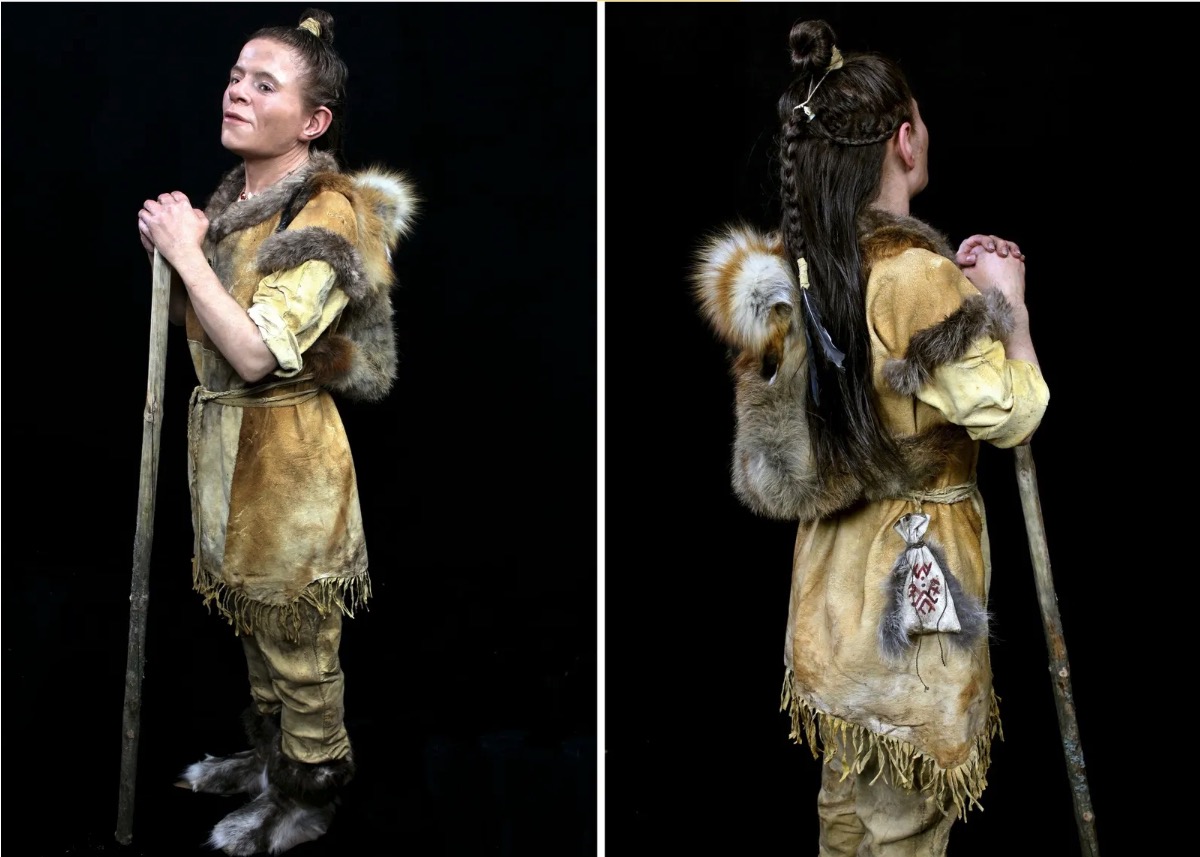It looks like you're using an Ad Blocker.
Please white-list or disable AboveTopSecret.com in your ad-blocking tool.
Thank you.
Some features of ATS will be disabled while you continue to use an ad-blocker.
share:
Hey! I know her. She works Rosedale at Riverside. She gots a smokers cough and knows where all the best trap houses are located.
originally posted by: Creep Thumper
a reply to: putnam6
You're the one who claimed that soft tissue can be theorized. Back it up.
Please note in your quote that the guy uses artistic interpretation.
First of all Creep Thumper apologizes if I offended your sensibilities in any way shape or form, I actually wanted to talk about Sweden 4000 years ago, etc, and we got caught up in a tad bit of sexism and body shaming on my part. Not a good look for 2023
However my penance for this transgression I'm looking for the original Forensic Files episode where I saw this discussed and is the basis for assertion it's not guesswork and there is an accepted forensic method for determining nose shape and size with a degree of accuracy.
It isn't gonna a be easy to find the video, there are only approximately 406 episodes, but please stay tuned, I believe it is on youtube. Till then Ive included a few links for light reading about the subject as well as a picture that backs the Brazilian study that the variance in nose sizes and shapes was only 3 mm. The most in-depth link is the first where the FBI reports on this subject see the quotes with the accompanying pic. Here is a long quote but it is completely germane to this conversation.
For complete transparency the FBI link is from 2002, one would assume they have improved upon this technique, and or #2 an accomplished sculptor would likely also understand and use these techniques.
Reconstructing the Shape of the Nose According to the Skull
Miroslav Prokopec
Scientific Advisor
Department of Health and Living Conditions
Institute of Public Health
Prague, Czech Republic
Douglas H. Ubelaker
Curator
Department of Anthropology
Smithsonian Institution
Washington, DC
Paper presented at the 9th Biennial Meeting of the International Association for Craniofacial Identification, FBI, Washington, DC, July 2000.
Introduction | Materials and Methods | Results | Discussion
Conclusion | References
Introduction
Facial reproduction has been utilized extensively by both law enforcement and historians, but some authors consider reconstructing the shape of the nose from the skull impossible (Suk 1935). Theoretically there exists a close morphological relationship between the soft parts of the face and the underlying skeleton. Both structures develop and grow together from the embryonic stage. Between the facial muscles and the bony relief of the face, there exists functional and morphological connections. The relationship of the details of the human face to the skull was studied by M.C. Caldwell (1981), T. S. Balueva and G. V. Lebedinskaya (1991), and D. H. Ubelaker and G. O’Donnell (1992). These authors summarized various techniques of facial reconstruction.
The Michail Michailovic Gerasimov Laboratory of Anthropological Reconstruction at the Institute of Ethnology and Anthropology, Russian Academy of Sciences, Moscow, experimented with the problem of reconstructing the nose shape (Gerasimov 1940). One of the authors, Miroslav Prokopec, was trained by Gerasimov’s pupil and successor, Galina Lebedinskaya, in the method developed and used in Gerasimov’s laboratory on reconstructing the nose shape on the basis of a skull with the nasal bones and the middle face skeletal part intact.
Materials and Methods
The authors used four well-preserved skulls (two males and two females) from an Old Slavonic cemetery in Rajhrad in southern Moravia, Czech Republic, dating from the ninth century A.D. (Hanáková et al. 1986; Stloukal and Vyhnanek 1976) to perform two-dimensional facial reconstructions and to demonstrate the method of nose shape reconstruction. The individuals were estimated to have been between 30 and 40 years old.
The younger of the two males, skull number 352, was of less than medium stature with a brachycranic skull. His body was found lying on a board; a knife was found with it.
Skull number 453 belonged to the younger of the two females, who was relatively tall and dolichocranic.
The older of the two males, skull number 427 (dolichocranic), was buried with a chisel and a knife.
Skull number 161 (female) was older than the two males, mesocranic, and tall.
Each skull was photographed, and an accurate drawing of each skull from the left profile was taken with a dioptrograph with all details of the facial skeleton and of the brain case (maxilla, os nasale, contour of the eye socket, os zygomaticum, processus zygomaticus, all the sutures). Reconstruction proceeded with the following steps:
The soft tissue of a face, head, and nose superimposed on a skull with lines drawn to indicate how reconstruction was developed.
Figure 1 The principle of nose profile construction according to the skull. Click here to view enlarged image.
A line (A) was drawn through the points nasion and prosthion (Figure 1).
Then a parallel line (B), intersecting the foremost point on the nasal bone, was drawn.
Four to six equidistant parallel lines (C, D, E, F, G, H) were drawn perpendicular to Line B on its section from the inferior tip of the nasal bone to the base of apertura piriformis. Each of these lines cross Line B and have an inner and outer section.
The distance from the rim of apertura piriformis to Line B on Line C (inner section) was measured. The same distance was measured on the outer section of Line C, and its anterior extremity was marked with a dot. This process was repeated for each of the Lines D, E, F, G, and H.
The dots on the outer sections of the Lines C, D, E, F, G, and H were connected with a curve, and the mean thickness of the skin and fat layer at this area (a little more than 2 mm) was added. This gave the most probable contour of the nose of a person whose face was reconstructed.
The thicknesses of the skin and the underlying tissue on the scalp and face used in
Gerasimov’ s laboratory are given in Table 1. These are means and standard deviations of measurements of soft parts on 9 places on the skull and face taken in 17 males of various nationalities from the former Soviet Union (8 were Russians).

archives.fbi.gov...
www.instructables.com...
pubmed.ncbi.nlm.nih.gov...
pubmed.ncbi.nlm.nih.gov...
When I see a face that has distinct hemispherical differentiation...I interpret it as a unique attempt at differentiation to create a whole...an asymmetrical whole due to the unequal mix of genetic dominant traits...whereas full symmetrical features in my opinion are merely proof of genetic dominance...from either the XY...or XX...
YouSir
That's a helluva pickup line, right there
This woman probably could never have even imagined that a bunch of people from all over the world would be arguing over if she was ugly or made to
look ugly based off her skull and a computer model. I find that hilarious for some reason.
But all you guys are forgetting about the Magic of Makeup, this is a woman with quite good bone structure, and with a bit of makeup, eyeliner and
lipstick, along with a good hair artist, she would be quite attractive.
originally posted by: RonnieJersey
But all you guys are forgetting about the Magic of Makeup, this is a woman with quite good bone structure, and with a bit of makeup, eyeliner and lipstick, along with a good hair artist, she would be quite attractive.
Only in a Zira kind of way.
originally posted by: RonnieJersey
But all you guys are forgetting about the Magic of Makeup, this is a woman with quite good bone structure, and with a bit of makeup, eyeliner and lipstick, along with a good hair artist, she would be quite attractive.
For those who can't get enough of Inge from Sweden

ancient-archeology.com...
The Neolithic woman and youngster were interred in a cist grave, a burial built with long, flat stones in the shape of a coffin. The woman died in her late 20s or early 30s, and at 4 feet, 11 inches (150 centimeters) in height, “she was not a very tall person,” even for the Neolithic period, Nilsson said.
The woman’s remains didn’t show any signs of malnutrition, injury or diseases, although it’s possible that she died of an illness that didn’t leave a mark on her remains, Nilsson said. “She seems to have had a good life,” he said. She ate land-based food, an examination of the isotopes (different versions of elements) in her teeth revealed, which was odd given that her grave was found near a fish-filled river near the coast, he said.
When Nilsson received the commission to reconstruct the woman two years ago, he scanned her skull and made a copy of it with a plastic 3D printer. As with other reconstructions he’s created, including those of an ancient Wari queen from what is now Peru and a Stone Age man whose head was found on a spike, Nilsson had to take into account the ancient individual’s sex, age, weight and ethnicity — factors that can influence the person’s facial tissue thickness and general appearance. But because the woman’s DNA was too degraded, he wasn’t sure about her genetic background, hair or eye color.
So Nilsson took an educated guess about her appearance. There were three large migration waves into ancient Scandinavia: During the first, hunter-gatherers with dark skin who tended to have blue eyes arrived between 12,000 and 10,000 years ago; the second wave included pale-skinned, dark-haired and brown-eyed farmers from further south who moved north about 5,000 to 4,000 years ago, when this woman was alive; and the third wave included the Yamnaya (also spelled Yamna) culture from modern-day Ukraine, who were a bit darker-skinned than the farmers and brought the art of metal making with them when they arrived about 3,500 years ago, making them the first Bronze Age culture in the region, Nilsson said.
Based on this information, Nilsson gave the woman brown hair and eyes, and light skin like the farmers’. Even so, the woman wasn’t necessarily a full-time farmer; she likely participated in a mix of hunting and gathering as well as agricultural practices, he said.
“We can’t say for sure whether she was living a nomadic life, if she was living the life of the early farmers; it’s impossible to say,” Nilsson said. “But we have chosen to make the safest interpretation, which is she was both because, of course, there was a transition period of many hundreds of years when they left the old way of living.”
Fancy furs, Stone Age style
In the reconstruction, the woman from Lagmansören is dressed head to toe in fur and leather. This is the work of Helena Gjaerum, a Sweden-based independent archaeologist who uses Stone Age techniques for tanning leather.
Before dressing the model, Gjaerum studied the ancient climate, landscape, vegetation and animal life of Neolithic Lagmansören. Based on what she uncovered, she designed the woman’s clothes out of moose and elk, the shoes out of reindeer, beaver and the backpack out of fox.
The woman likely stuffed hay inside the shoes for padding, noted Gjaerum, who took inspiration from clothing worn by Indigenous Americans and Indigenous Siberians, as well as the leather clothing of Özti the Iceman mummy, who lived about 5,300 years ago in the Italian Alps.
originally posted by: Ilikesecrets
originally posted by: RonnieJersey
But all you guys are forgetting about the Magic of Makeup, this is a woman with quite good bone structure, and with a bit of makeup, eyeliner and lipstick, along with a good hair artist, she would be quite attractive.
Only in a Zira kind of way.

originally posted by: putnam6
originally posted by: RonnieJersey
But all you guys are forgetting about the Magic of Makeup, this is a woman with quite good bone structure, and with a bit of makeup, eyeliner and lipstick, along with a good hair artist, she would be quite attractive.
Ummm...For those who can't get enough of Greta from Sweden...?
Double D'oh...
edit on 14-1-2023 by YouSir because: formatting is fun...
a reply to: putnam6

As for this woman, I'm sure she was probably not too different looking than any other chick from her time period. I have to agree that with a little make-up and hair care she most likely would get a few second looks today. All this being said, I do have to question the nose structure as well. Having a large nostril would be disadvantageous in colder climates. It's possible that Sweden isn't her native land though.

As for this woman, I'm sure she was probably not too different looking than any other chick from her time period. I have to agree that with a little make-up and hair care she most likely would get a few second looks today. All this being said, I do have to question the nose structure as well. Having a large nostril would be disadvantageous in colder climates. It's possible that Sweden isn't her native land though.
Facial reconstruction of a woman who's been dead for over 4,000 years and the commentary is primarily focused on whether or not you'd bone her.
That's enough internet for tonight.
That's enough internet for tonight.
originally posted by: RonnieJersey
But all you guys are forgetting about the Magic of Makeup, this is a woman with quite good bone structure, and with a bit of makeup, eyeliner and lipstick, along with a good hair artist, she would be quite attractive.
Add soap and feminine hygiene products, it might only take ten beers to do the trick.
originally posted by: TzarChasm
originally posted by: Creep Thumper
She is unattractive because of the interpretation of the nose. As it's soft tissue, they can't really know what it looked like. They deliberately made her ugly.
I like how they interpreted her hair in a modern "design".
Pathetic science. 👎🏻
She's unattractive because she resembles a lifelike rendering of a Flintstones character that was originally conjured up by someone who never actually met a stone age person but was simply told "make her look funny".
originally posted by: Crackalackin
a reply to: putnam6
She kind of reminds me of the gremlin from spider man.
She definitely has the hobgoblin look, throw on some orange tinted goggles and a christmas elf hat with the pointy fabric ears and she's perfect for the role.
Not a hobgoblin. The Green Goblin as played by Willem Dafoe. It looks like Willem Dafoe.
originally posted by: GENERAL EYES
Facial reconstruction of a woman who's been dead for over 4,000 years and the commentary is primarily focused on whether or not you'd bone her.
That's enough internet for tonight.
I'm sorry....but I have been saving this for such a long time.....

originally posted by: 19Bones79
a reply to: putnam6
Not to offend even more people, but she seems to have an Eastern European look,
My first thought was French.
Top half reminds me of Juliette Binoche and the bottom half of Gerrard Depardieu.
Had to look up Miss Binoche, but when I saw her picture I do recall her face. She has very intriguing and appealing looks to me, and yes IIRC her chin does seem a bit Depardieuesque.
originally posted by: GENERAL EYES
Facial reconstruction of a woman who's been dead for over 4,000 years and the commentary is primarily focused on whether or not you'd bone her.
That's enough internet for tonight.
The consternation here does remind me a bit of the Otzi the Caveman discovery. Perhaps we need an ATS PG-13
Pssst, guess what it's an NSFW link It deals with an adult subject matter viewer discretion is advised.
But it isn't the first time such an archeological find had such risque responses.
www.straightdope.com...
new topics
-
Steering the Titantic from the Drydock.
US Political Madness: 19 minutes ago -
Paramilitary Leaks - John Williams
Whistle Blowers and Leaked Documents: 9 hours ago -
Some sausage, some chicken, some sauce, some onions and some garlic...and some peppers!
Food and Cooking: 10 hours ago -
Hearing more ambulances lately
Medical Issues & Conspiracies: 11 hours ago -
Los Angeles brush fires latest: 2 blazes threaten structures, prompt evacuations
Mainstream News: 11 hours ago
top topics
-
House Passes Laken Riley Act
Mainstream News: 12 hours ago, 23 flags -
What Comes After January 20th
Mainstream News: 14 hours ago, 18 flags -
Los Angeles brush fires latest: 2 blazes threaten structures, prompt evacuations
Mainstream News: 11 hours ago, 7 flags -
Hearing more ambulances lately
Medical Issues & Conspiracies: 11 hours ago, 6 flags -
Let's Buy Greenland
General Chit Chat: 16 hours ago, 6 flags -
Those stupid GRAVITE commercials
Rant: 15 hours ago, 5 flags -
Paramilitary Leaks - John Williams
Whistle Blowers and Leaked Documents: 9 hours ago, 5 flags -
The more I think about it
General Chit Chat: 12 hours ago, 4 flags -
Canada as a state .. how would it work?
General Chit Chat: 14 hours ago, 4 flags -
Some sausage, some chicken, some sauce, some onions and some garlic...and some peppers!
Food and Cooking: 10 hours ago, 3 flags
active topics
-
Steering the Titantic from the Drydock.
US Political Madness • 0 • : CosmicFocus -
Meta Llama local AI system is scary good
Science & Technology • 48 • : ArMaP -
-@TH3WH17ERABB17- -Q- ---TIME TO SHOW THE WORLD--- -Part- --44--
Dissecting Disinformation • 3968 • : AianawaQ1320 -
Gravitic Propulsion--What IF the US and China Really Have it?
General Conspiracies • 34 • : Lazy88 -
Canada as a state .. how would it work?
General Chit Chat • 15 • : Freeborn -
Let's Buy Greenland
General Chit Chat • 16 • : Freeborn -
Post A Funny (T&C Friendly) Pic Part IV: The LOL awakens!
General Chit Chat • 8000 • : KrustyKrab -
Los Angeles brush fires latest: 2 blazes threaten structures, prompt evacuations
Mainstream News • 13 • : BeyondKnowledge3 -
House Passes Laken Riley Act
Mainstream News • 16 • : KrustyKrab -
Planned Civil War In Britain May Be Triggered Soon
Social Issues and Civil Unrest • 16 • : Freeborn
